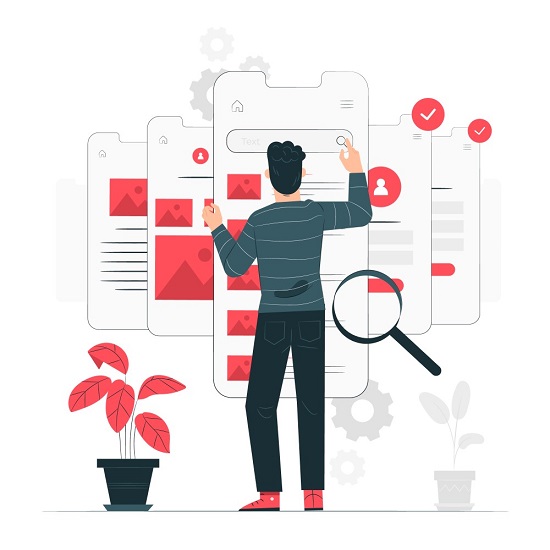Traditional approaches to enterprise IT – typically reliant on time-consuming, manual processes – have been overtaken in recent years by more agile, efficient, outcome-orientated models.
And with that shift putting an emphasis on faster cycles of development for software products, DevOps and Agile methodologies are now essential for any business looking to succeed with a meaningful digital transformation initiative.
So, you’re likely familiar with the practice of continuous delivery within DevOps and Agile, and the faster time-to-market this creates for your applications.
But many businesses are too focused on this speed and are consequently overlooking the importance of quality assurance, to their own detriment. Even for businesses who don’t make that mistake, maintaining the necessary levels of quality alongside the speed of continuous delivery is still proving a significant challenge.
The solution to this challenge is continuous testing. In fact, evolving your software testing processes to be streamlined and integrated with your continuous delivery pipeline is crucial to your digital transformation initiative.
In this article, we’ll explore what continuous testing really is, how it can help your business, and how you should approach it from a strategic point of view.
Continuous Testing

Continuous testing is a way of ensuring that product quality is deeply ingrained in every part of the development process – which should be a priority for every business these days – and keeps testing aligned to continuous delivery.
Without the right quality assurance measures in place, the risk of a product or application failing is far greater, meaning the consequences for the business are more severe.
Continuous testing will take care of that, while significantly reducing the time in which developers receive feedback on what they’ve delivered. This is achieved by leveraging tests activated in certain environments alongside development, in addition to the traditional tests carried out manually at various stages.
Here, tests are carried out as a built-in part of the software delivery pipeline to provide instant feedback on the potential risks associated with the product.
In practice, what this means is removing legacy processes from within your software development and testing cycles, and introducing new technologies and tools designed for more agile workflows to achieve greater quality.
This is not quite as disruptive as it may first sound. Testing and delivery would still be based on a sequential process but would instead be conducted with a test environment as a service where you execute tests based on specific requirements.
So, for example, you wouldn’t have to wait until your functional testing was complete to then move on to performance testing, thus accelerating the time to delivery.
Why Your Business Needs to Make This Change
If your business is practising – or even looking to practice – some kind of continuous delivery approach, while maintaining the highest possible levels of quality, continuous testing will be necessary.
Embracing this method will allow your teams to maintain quality assurance thoroughly, with each test taking place as soon as possible in the lifecycle of the application. This causes no delay to the project timeline and means developers are always aware of any potential issues before they’re allowed to become problems, vastly reducing the risk of bugs going live into production.
That involves using tools that leverage advantages such as automation, so that testing is done early, often, and as deeply and widely as possible.
When you begin to evaluate quality at every step of the development process, you will immediately recognise the positive results, not just for the productivity and efficiency of your team, but from a business point of view as well.
This is especially relevant to large enterprises with large user bases. If testing and QA are not effectively embedded into the process of development and the pipeline of continuous delivery, the risk can become substantial, because the failure of an application once it’s been deployed can have a catastrophic impact on your business.
Benefits of Continuous Testing

When you are able to successfully execute a strategy for introducing continuous testing into your development, you’ll see positive changes begin to occur quickly. The advantages gained will move you closer to achieving your digital transformation goals, for example:
- Bugs, errors, and new risks become apparent as soon as they arise
- More frequent releases of new updates and products
- Lower costs due to less manual resources and less repeated efforts
- Accelerated speed of development and streamlined processes
- Tools with greater ease-of-use and adaptability for the team
- Greater quality of products through more in-depth metrics and feedback
- Significant reduction of business risk
- The ability to respond to new or changing business requirements quickly
- Keeping up with the pace of competitors
How to Introduce Continuous Testing
The businesses leading the way with digital transformation are the ones who have embraced automation to help their software delivery become more effective and efficient.
Automating processes within testing allows the code to be quality-checked immediately when submitted, with far greater depth and coverage, at greater speeds, and with greater accuracy than any manual test can achieve.
And with technologies such as AI and ML also coming into play, your teams will be afforded even more innovative capabilities.
Prioritise Your People and Your Culture

Like any new technology implementation, you should begin by gaining approval and advocacy from stakeholders in senior leadership positions, including an ambassador who will help drive and encourage this change with you.
Just as importantly, though, you must ensure the teams who will be affected will feel comfortable adopting these new ways of working.
Automation can be a scary word for an employee, as it often raises concerns over the removal of manual jobs, whereas really the focus is on streamlining those jobs to free up time for more creative tasks.
Be transparent with your people from the very beginning and make sure to demonstrate the value these new processes will have for them, show them the benefits this will bring to their personal roles, and so on. This will help change the mindset of your team and help facilitate smooth adoption.
Then start by looking into what capabilities your teams need by analysing the current status quo and researching the best tools for those requirements. Remember to focus on giving your people what tools they need to do their jobs better, and what kind of user experience they want from those tools.
You will also need to choose technologies that can easily integrate with existing systems and processes and are compatible with your continuous delivery pipeline.
It’s wise to detail an incremental strategy that will introduce the new testing tools and processes in gradual steps, with frequent review and optimisation wherever possible. Seek the help of certain teams to be the early adopters and allow them to provide feedback on their experience to ensure the transformation is having the desired effects.
The Final Ingredient
The days of conducting time-consuming, repetitive processes for software testing are long gone. Those who resist or react to this trend slowly – or have not begun to act already – will soon find themselves unable to stay relevant when compared to the rest of the market.
As technology continues to provide better tools and more efficient ways of working than ever before, your business can take far more control over the quality of software products, as long as your testing strategy is made a priority.
Of course, the changes suggested above can be challenging. Successful digital transformation requires a complex selection of moving parts to work together in harmony.
If you’re unsure of the best way to successfully introduce continuous testing into your existing strategy, an option to consider is working with a proven, experienced partner like us who can guide you to take the right steps in the right order.
